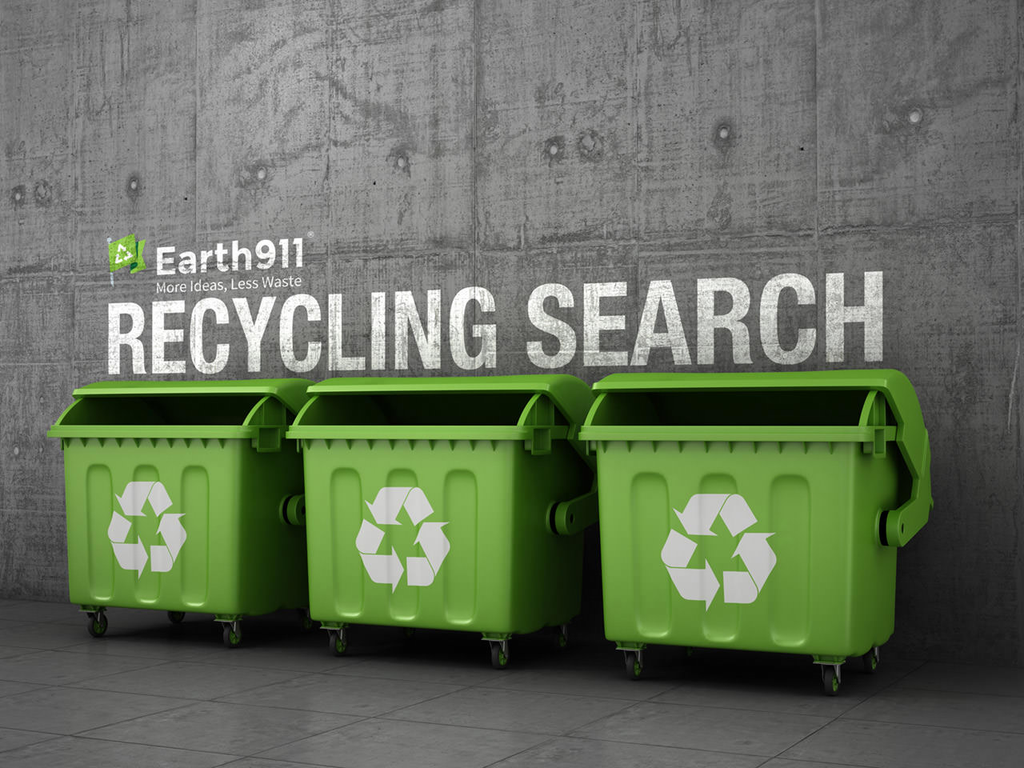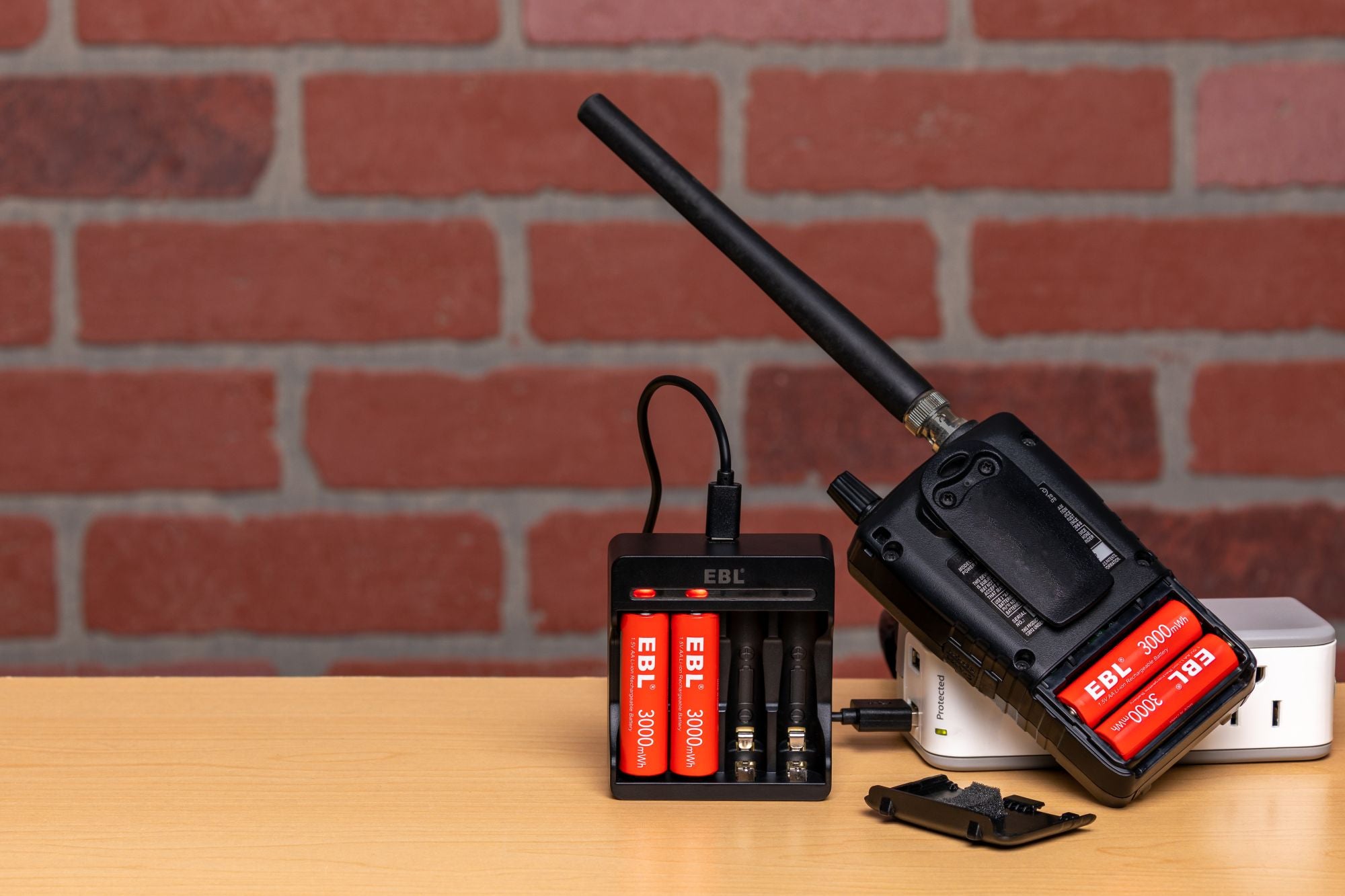Batteries play a vital role in powering our lives. We need them to keep our devices buzzing, fuel our remote-controlled adventures, and more. However, even these little energy powerhouses have their limits, and that's where battery expiration comes into the picture. This guide will illuminate the mysteries surrounding battery expiration in EBL batteries, address common concerns and anxieties, and provide practical solutions to navigate this phenomenon.

So, let’s begin:
EBL Battery Expiration - What You Need to Know
The world of batteries is evolving rapidly; therefore, understanding their expiration is essential. Doing so will allow you to gain the optimal device experience, thanks to the powerful batteries in their prime state.
So, let's dive into the expiration details of EBL batteries and discover how to make the most of their power.
Shelf Life of EBL Batteries:
The shelf life of EBL batteries refers to the period during which they can be stored without significant power loss. EBL batteries typically have a shelf life of several years (10 or more, to be precise), ensuring you have reliable power when needed most. It's essential to check the manufacturing date and adhere to recommended storage conditions to maximize shelf life.
Expiration Dates:
While EBL batteries do not have explicit expiration dates printed on them, they have recommended usage times based on their chemistry and capacity. It's generally advised to replace batteries after several years or when you think the self-discharge rate has increased.
Keep track of when you purchased your batteries and consider replacing them if they have been used for an extended period.
Capacity Fade:
Over the years, EBL batteries may experience capacity fade, meaning their ability to hold a charge gradually diminishes - this happens with all batteries, no matter the brand.
This can result in reduced usage times and the need for more frequent recharging or battery replacements. Monitoring the performance of your EBL batteries and being aware of any significant drops in capacity can help you stay prepared.
Proper Storage:
To prolong EBL batteries' lifespan, storing them in appropriate conditions is crucial. Keep them in a cool, dry place, away from direct sunlight and extreme temperatures. Avoid storing them near sources of heat or moisture, as these factors can accelerate capacity fade and shorten their overall lifespan.

Battery Recycling:
When it's time to retire your EBL batteries, it's important to dispose of them responsibly. Battery recycling is an environmentally friendly option that allows for the recovery of valuable materials and prevents harmful substances from entering landfills. Check local recycling centers or collection points to ensure your used EBL batteries are recycled properly.
Compatibility Considerations:
EBL batteries come in various chemistries, voltages, and capacities to meet the diverse needs of different devices. It's important to ensure compatibility between the battery and the device you're using. Always refer to the device's specifications and recommended battery types to maximize performance and safety.
When you know a thing or two about battery expiration, you can implement proper storage and disposal practices, and make the most of your battery power - resulting in a greener environment.
Remember to keep track of usage time, monitor capacity fade, and recycle your used EBL batteries responsibly for a seamless power experience.
Shelf Life of EBL Batteries: Power that Lasts for Years
When it comes to shelf life, EBL batteries are designed to go the distance. These reliable power sources offer an impressive shelf life, ensuring you have dependable energy whenever you need it. Let's explore the shelf life of EBL batteries and how they maintain their power over time.
EBL takes pride in its AA and AAA alkaline batteries, which boast an amazing 10-year shelf life.
With this extended shelf life, you can confidently stock up on EBL batteries, knowing they will retain their power for a significant period.

One of the secrets behind the impressive shelf life of EBL batteries lies in their embedded seal structure. This innovative design expands the space within the crystal lattice, creating more room for hydrogen.
As a result, EBL batteries can maintain a remarkable 75% of their power even after three years of storage. This is made possible through EBL's dedication to low self-discharge technology, which minimizes power loss during idle periods.
The concentration on low self-discharge is a vital aspect of EBL batteries. By carefully managing the internal chemistry, EBL ensures that its batteries hold their charge over extended periods of non-use. This feature is precious for devices that are infrequently used or in situations where batteries may be stored for extended periods.
The 10-year shelf life of EBL batteries provides convenience and peace of mind. Whether you're stocking up for emergencies, everyday use, or special occasions, you can trust that EBL batteries will deliver reliable power, even after years of storage.
So, next time you reach for an EBL battery, remember that their embedded seal structure and low self-discharge technology work hand in hand to provide long-lasting power. With EBL, you can confidently rely on their batteries to keep your devices running smoothly, even if they've been sitting on the shelf for years.
Everything You Need to Know About EBL Batteries Self Discharge Rates
Self-discharge is an inherent characteristic of batteries and can vary depending on the chemistry and quality of the battery. EBL batteries are available in various types and sizes, including Lithium-ion, Ni-MH, Ni-Cd, and Alkaline. Let's discuss the self-discharge rate and factors that affect the expiration of these EBL batteries.
How long does it take for lithium-ion batteries to expire?
When it comes to self-discharge rates, Lithium-ion batteries reign supreme, radiating brilliance. These batteries experience a minimal decline of just 1-2% in charge per month. Thus, even during extended periods of inactivity, we can rely on their unwavering power reserves.
How long does it take for Ni-MH Batteries batteries to expire?
Now, let's turn our attention to Ni-MH batteries, which have a slightly higher self-discharge rate than Lithium-ion ones. In the first 24 hours of rest, they may lose around 10-15% of their charge.
After that, the decline slows to about 1-2% daily. Regular recharging is essential to optimize their performance.
How long does it take for Ni-CD Batteries batteries to expire?
For those utilizing Ni-Cd batteries, it's important to note their propensity for higher self-discharge. Within the first 24 hours of inactivity, they can lose approximately 20% of their charge. Surprisingly, this downward trend continues at a rate of 10-20% per month. Proper handling, storage, and timely recharging are critical for their optimal utilization.
How long does it take for Alkaline Batteries batteries to expire?
They possess an incredibly low self-discharge rate. Would you believe they retain up to 90% of their charge even after a year of storage? It's true! With a shelf life of 7 to 10 years, they are our unwavering allies, providing consistent power when needed.
Table for Self Discharge Rates of Various EBL Batteries
|
Battery |
Dimension |
Chemistry |
Voltage |
Capacity |
Self-Discharge Rate |
|
18.3*66 mm |
Lithium-ion |
3.7V |
3000mAh |
1-2% per month |
|
|
14.5*50.5 mm |
Ni-MH |
1.2V |
2800mAh |
10-15% in 24 hours |
|
| 10.35*44.35mm |
Ni-MH |
1.2V |
1100mAh |
10-15% in 24 hours |
|
|
AA |
13.5*44.5 mm |
Lithium-ion |
1.5V |
3000mWh |
1-2% per month |
|
14.7*50 mm |
Lithium-ion |
1.5V |
3300mWh |
1-2% per month |
|
|
D |
32.5*61 mm |
Ni-MH |
1.2V |
10000mAh |
10-20% per month |
|
AA |
Ni-MH |
1.2V |
2500mAh |
10-15% in 24 hours |
|
|
16.5*35.1 mm |
Lithium-ion |
3V |
700mAh |
1-2% per month |
|
|
AAA |
Ni-MH |
1.2V |
1100mAh |
10-15% in 24 hours |
|
|
C |
25.5*49.5 mm |
Ni-MH |
1.2V |
5000mAh |
10-20% per month |
|
48*26*17mm |
Lithium-ion |
9V |
5400mWh |
1-2% per month |
|
|
9V |
50*38*30mm |
Lithium-ion |
9V |
600mAh |
1-2% per month |
|
10.5*44.5mm |
Lithium-ion |
1.5V |
900mWh |
1-2% per month |
|
|
USB 18650 |
18.5*70.3 mm |
Lithium-ion |
3.7V |
11100mWh |
1-2% per month |
|
26650 |
26.3*65.55 mm |
Lithium-ion |
3.7V |
5000mAh |
1-2% per month |
|
RCR123A/16340 |
Lithium-ion |
3.7V |
750mAh |
1-2% per month |
|
|
14.2*50 mm |
Lithium-Ion |
3.7V |
800mAh |
1-2% per month |
|
|
AA |
14.5*50.5 mm |
NiMH |
1.2V |
2300mAh |
10-15% in 24 hours |
|
AA |
14.5*50.5 mm |
Ni-MH |
1.2V |
2500mAh |
10-15% in 24 hours |
|
AAA |
10.5*43.9 mm |
Lithium-Ion |
1.5V |
1200mWh |
1-2% per month |
|
9V |
45.426.617.3 mm |
Ni-MH |
9V |
280mAh |
10-20% per month |
|
21700 USB |
21.5*76.4 mm |
Lithium-Ion |
3.7V |
18500mWh |
1-2% per month |
|
AAA |
10.5*44.5 mm |
Ni-Cd |
1.2V |
5000mAh |
10-20% per month |
|
AA |
14*50 mm |
Alkaline |
1.5V |
2700mAh |
Very low |
|
AAA |
10.35*44.3 mm |
Ni-MH |
1.2V |
800mAh |
10-15% in 24 hours |
|
10440 |
10.03*44.2 mm |
Lithium-ion |
3.7V |
350mAh |
1-2% per month |
|
AA |
14.1*50.2 mm |
Ni-CD |
1.2V |
1100mAh |
10-20% per month |
|
AAA |
10*44 mm |
Alkaline |
1.5V |
1100mAh |
Very low |
|
C |
25.5*50 mm |
Ni-Cd |
1.2V |
4000mAh |
10-20% per month |
|
USB D |
32.1*61.1 mm |
Lithium-ion |
1.5V |
10000mWh |
1-2% per month |
|
AAAA |
7.9*42.2 mm |
Ni-MH |
1.2V |
400mAh |
10-15% in 24 hours |
|
18500 |
18.3*49.8 mm |
Lithium-ion |
3.7V |
1600mAh |
1-2% per month |
|
AA |
Lithium-ion |
1.5V |
3000mAh |
1-2% per month |
|
|
1/2 AA |
14.5*25.5 mm |
Lithium |
3.6V |
1200mAh |
1-2% per month |
|
CR2450 |
4.85*24.5 mm |
Lithium-manganese dioxide |
3V |
600mAh |
Very low |
|
CR123A |
16.75*33.9 mm |
Lithium |
3V |
1600mAh |
Very low |
|
9V |
25.5*16.5*47.5 mm |
Alkaline |
9V |
600mAh |
Very low |
|
TB-RF67 |
27.6*12.75 mm |
Lithium-manganese dioxide |
6V |
210mAh |
Very low |
|
AAA |
Lithium |
1.5V |
1200mAh |
1-2% per month |
|
|
Sub C |
22.2*42.4 mm |
NiCd |
1.2V |
2300mAh |
10-20% per month |
|
AAA |
10.5*44.5 mm |
Lithium Iron |
1.5V |
1200mAh |
1-2% per month |
|
RCR2 |
15.15*27.5 mm |
Lithium-ion |
3.7V |
400mAh |
1-2% per month |
|
4LR44 |
12.2*25 mm |
Alkaline |
6V |
115mAh |
Very low |
|
D |
33.25*60.5 mm |
Alkaline |
1.5V |
20000mAh |
Very low |
|
CR2 |
15.1*26.7 mm |
Lithium manganese |
3V |
800mAh |
Very low |
|
C |
25.55*49.25 mm |
Alkaline |
1.5V |
8000mAh |
Very low |
What Factors Affect Battery Expiration?
1:Temperature affect battery expiration
Nobody likes a hot head, especially batteries. High temperatures speed up their self-discharge rate and shorten their lifespan. So, if you want your batteries to stick around longer, give them a cool and dry place to chill.
2:Chemistry affect battery expiration
Batteries come in various varieties, each with a self-discharge rate and lifespan. Lithium-ion batteries are the cool kids on the block, with a longer lifespan than the Ni-MH and Ni-Cd crew—chemistry matters.
3:Battery Quality affect battery expiration
When it comes to batteries, you get what you pay for. High-quality batteries are the cream of the crop. They have lower self-discharge rates and can go the distance. So, invest in the good stuff if you want your batteries to last.
4:Storage Conditions affect battery expiration
Just like people, batteries don't like extreme conditions. Storing them in high humidity or subjecting them to extreme temperatures can lead to self-discharge on steroids and premature battery failure. Show some love and give them a comfortable place to hang out.
5:Battery Capacity affect battery expiration
Bigger is sometimes better when it comes to battery capacity. Batteries with higher mAh/mWh ratings tend to be more self-conscious and self-discharge faster than their lower-rated counterparts.
6:Usage Patterns affect battery expiration
Regular use and recharging can do wonders for your batteries' longevity. Treat them like your favorite gadget and use them frequently to keep them in tip-top shape. Neglected batteries are more likely to throw tantrums and self-discharge faster.
Battery Expiration FAQs:
1: When do batteries expire?
Batteries remain functional for a period of approximately 5 to 10 years. However, it's important to note that this timeframe may vary depending on the specific type and brand of the battery. To ensure optimal performance, it is advisable to keep a watchful eye on the expiration dates and bid farewell to your loyal batteries when their time has come.
2: How do batteries expire?
Battery expiration is a gradual decline and doesn’t involve flashy explosions. Over time, batteries experience self-discharge, wherein the chemicals within undergo reactions that gradually diminish their ability to hold a charge. This phenomenon is akin to the slow and steady drain we often experience in our own energy levels after a long day.
3: What should I do with expired batteries?
Now, we arrive at the quintessential question: what should we do with our expired batteries? Given that batteries contain hazardous chemicals, responsible recycling is of paramount importance. Many communities provide designated battery recycling centers or drop-off points where you can safely dispose of your expired batteries. Consider this as an opportunity to grant them a chance for a fresh start in an environmentally sound manner.
4: Can you extend the battery shelf life?
A few strategies can help extend the shelf life of batteries. It is advisable to store them in a cool and dry environment. Excessive heat and humidity can accelerate the self-discharge process, reducing their longevity.
Furthermore, regular charging and discharging practices are essential for those employing rechargeable batteries. This routine aids in maintaining their capacity and ensuring smooth, uninterrupted performance.
5: Where can I find the expiration date on batteries?
It's rare to find it directly imprinted on the battery itself. You can focus on the plastic packaging or box housing the battery. Here’s where you’ll likely stumble upon the numbers or a specific label denoting the battery's expiration date.
Battery Expiration Guide Summary
With this guide, we have explored specific expiration characteristics, the lifespan of EBL batteries, and how to keep a habit of checking their expiration dates to ensure optimal performance and safety.
PS:While EBL batteries are top-notch, there’s no doubt that they can lose their power in several years - as all batteries do.





2 comments
Glenn
I have been using EBL 2A batteries for a number of small led project. I have noticed recently that when I put the batteries in the EBL recharger that a few of the batteries are blinking red. After staying in the charger over night they are still blinking. When I test them they still read 1.5 volts so I’m continuing to use them. Is the blinking an indication that they are on there way out? Any other signs to look for?
Nora Alexander
I have been using EBL batteries for several years and needed to replace some this year. One of those has already become unusable.
Leave a comment
All comments are moderated before being published.
This site is protected by hCaptcha and the hCaptcha Privacy Policy and Terms of Service apply.